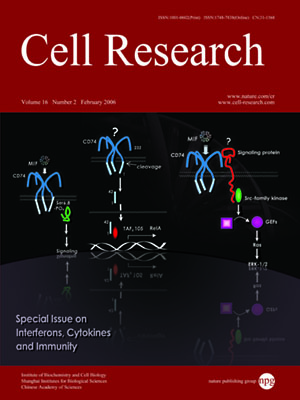
Volume 16, No 2, Feb 2006
ISSN: 1001-0602
EISSN: 1748-7838 2018
impact factor 17.848*
(Clarivate Analytics, 2019)
Volume 16 Issue 2, February 2006: 169-173
REVIEWS
TGF-β and cancer: Is Smad3 a repressor of hTERT gene?
He Li1, Dakang Xu1, Ban-Hock Toh1, Jun-Ping Liu1
1Department of Immunology, Molecular Signaling Laboratory, Monash University, Melbourne, Australia
Correspondence: He Li(he.li@med.monash.edu.au)
Transforming growth factor β (TGF-β) carries out tumor suppressor activity in epithelial and lymphoid cells, whereas telomerase is required for most cancers. Although the molecular mechanisms by which TGF-β acts as a tumor suppressor are yet to be fully established, a link between TGFb and its tumor suppressor activity by telomerase has been suggested. Recently, we have noted a novel mode of action for TGF-β through which human telomerase reverse transcriptase (hTERT) gene is repressed in immortal and neoplastic cells, confirming that one of the mechanisms underlying TGF-β suppression of tumor growth may be through inhibiting hTERT gene transcription. Moreover, the inhibition of hTERT gene by TGF-β suggests a
cis action of the TGF-β signaling molecule Smad3 on hTERT promoter directly. This article examines our current understanding and investigation of TGF-β regulation of telomerase activity, and presents a model in which Smad3 participates in regulating hTERT gene transcription by acting as a repressor directly. Engineering the interface between Smad3 and hTERT gene may lead to a new strategy to inhibit telomerase activity in cancer.
Cell Research (2006) 16:169-173. doi:10.1038/sj.cr.7310023; published online 13 February 2006
FULL TEXT | PDF
Browse 1949


